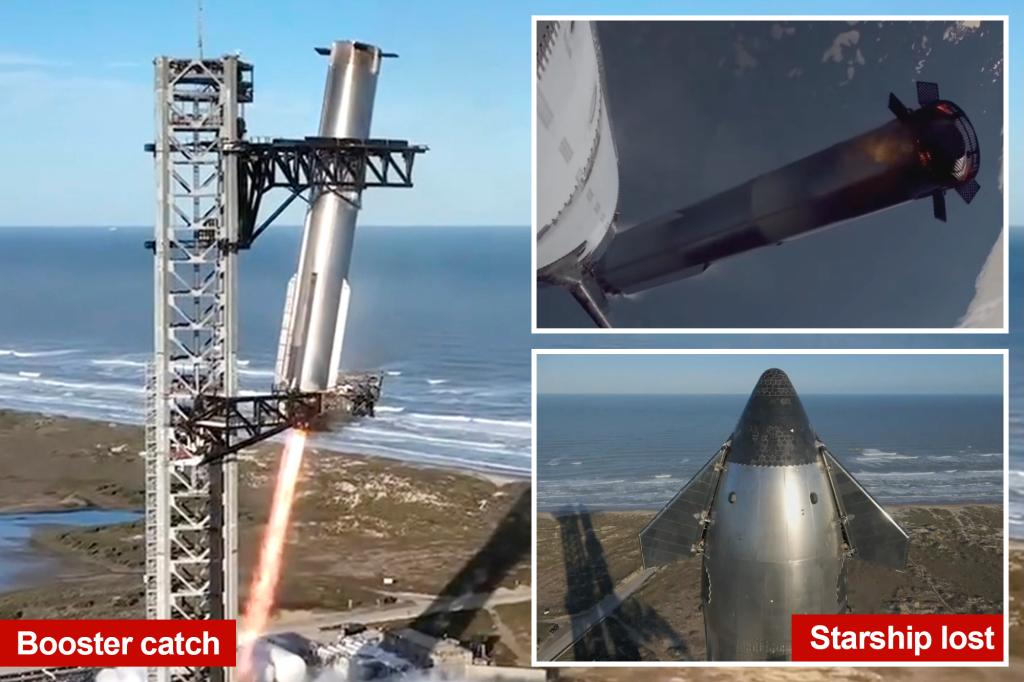SpaceX embarked on a significant test flight of its groundbreaking Starship rocket, marking another step in the ambitious pursuit of interplanetary travel. The towering 400-foot rocket, designed to eventually ferry humans to the Moon and Mars, lifted off from Boca Chica, Texas, carrying a payload of 10 dummy satellites. A key objective of this mission was to demonstrate the spacecraft’s ability to deploy satellites and execute a controlled re-entry over the Indian Ocean. The launch itself was visually stunning, with the retro-styled spacecraft ascending against the backdrop of the setting sun, ensuring daylight visibility for its planned splashdown halfway across the globe. While the initial stages of the mission appeared promising, the test flight ultimately met with a setback, highlighting the inherent complexities and challenges of pushing the boundaries of space exploration.
A critical component of SpaceX’s strategy involves the reusability of its rockets, a cost-saving measure crucial for frequent and sustainable space travel. This particular mission marked the second attempt to catch the returning booster stage using massive robotic arms affectionately nicknamed “chopsticks.” Unlike the previous attempt, which resulted in damage to the catching mechanism, this time the “chopsticks” successfully grasped the hovering booster, securing it back on the launch pad. This successful catch represented a significant achievement for SpaceX, demonstrating progress in their efforts to streamline and economize the launch process. However, the overall mission faced a critical obstacle when the spacecraft itself encountered problems during its ascent.
Approximately eight and a half minutes into the flight, communication with the ascending Starship was lost. The spacecraft, designed to skim the edge of space before its controlled descent, experienced engine failures that ultimately led to its destruction. Although the mission did not fully achieve its objectives, SpaceX views each launch as a learning opportunity, gathering valuable data to refine and improve the Starship system. Despite the setback, the successful booster recovery using the “chopsticks” method provides a valuable stepping stone towards more efficient and cost-effective space operations.
The loss of the Starship spacecraft serves as a reminder of the inherent risks and challenges involved in developing and testing cutting-edge space technology. The ambitious goals set by SpaceX, including eventual crewed missions to Mars, necessitate pushing the boundaries of engineering and innovation. Each test flight, whether successful or not, provides crucial data and insights that contribute to the iterative development process. The loss of the spacecraft during this mission will undoubtedly lead to further analysis and refinements to the Starship design.
While SpaceX grappled with the outcome of its Starship test, another prominent player in the private space industry, Blue Origin, founded by Jeff Bezos, experienced a mixed result with its own rocket launch. Blue Origin successfully launched its New Glenn rocket on its maiden voyage, reaching orbit and deploying an experimental satellite. However, similar to SpaceX’s experience, the booster stage of New Glenn was lost during its attempted landing on a floating platform in the Atlantic. These concurrent events underscore the inherent difficulties and complexities involved in rocket reusability, a technology pivotal to the future of affordable and frequent space access.
The parallel experiences of SpaceX and Blue Origin highlight the dynamic and challenging landscape of private space exploration. Both companies are pushing the boundaries of rocket technology, striving for reusable systems that will drastically reduce the cost of accessing space. The successes and setbacks encountered by both companies underscore the iterative nature of development in this demanding field. Each launch represents a step forward, providing valuable data and insights that drive innovation and progress towards the ultimate goal of making space travel more accessible and sustainable. The loss of spacecraft, while disappointing, serves as a crucial learning opportunity, paving the way for further refinements and improvements in future missions.

